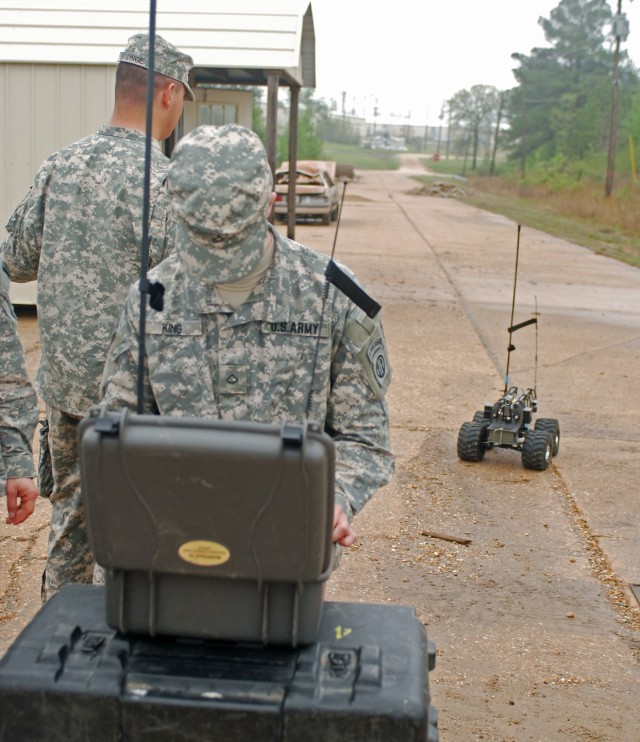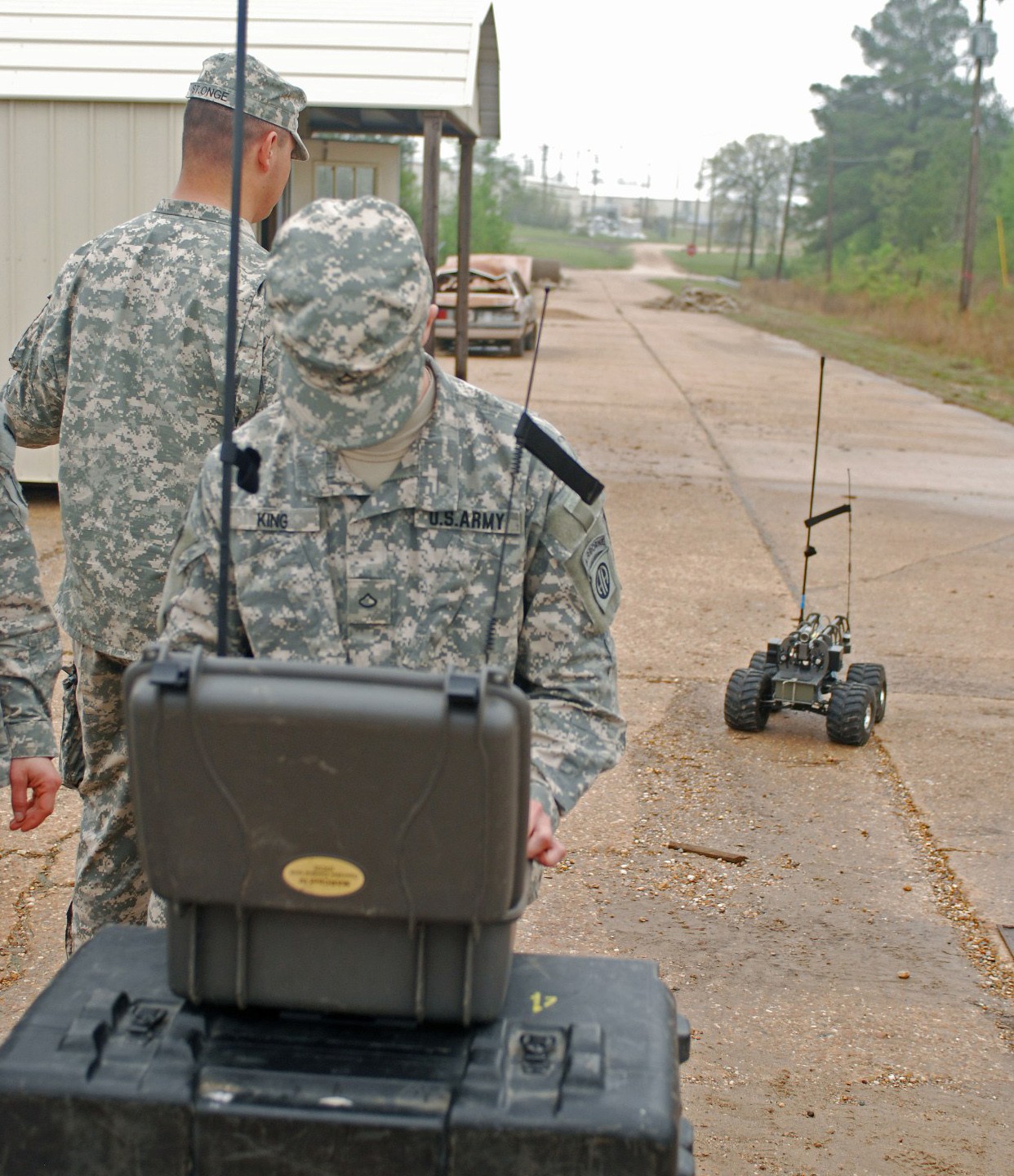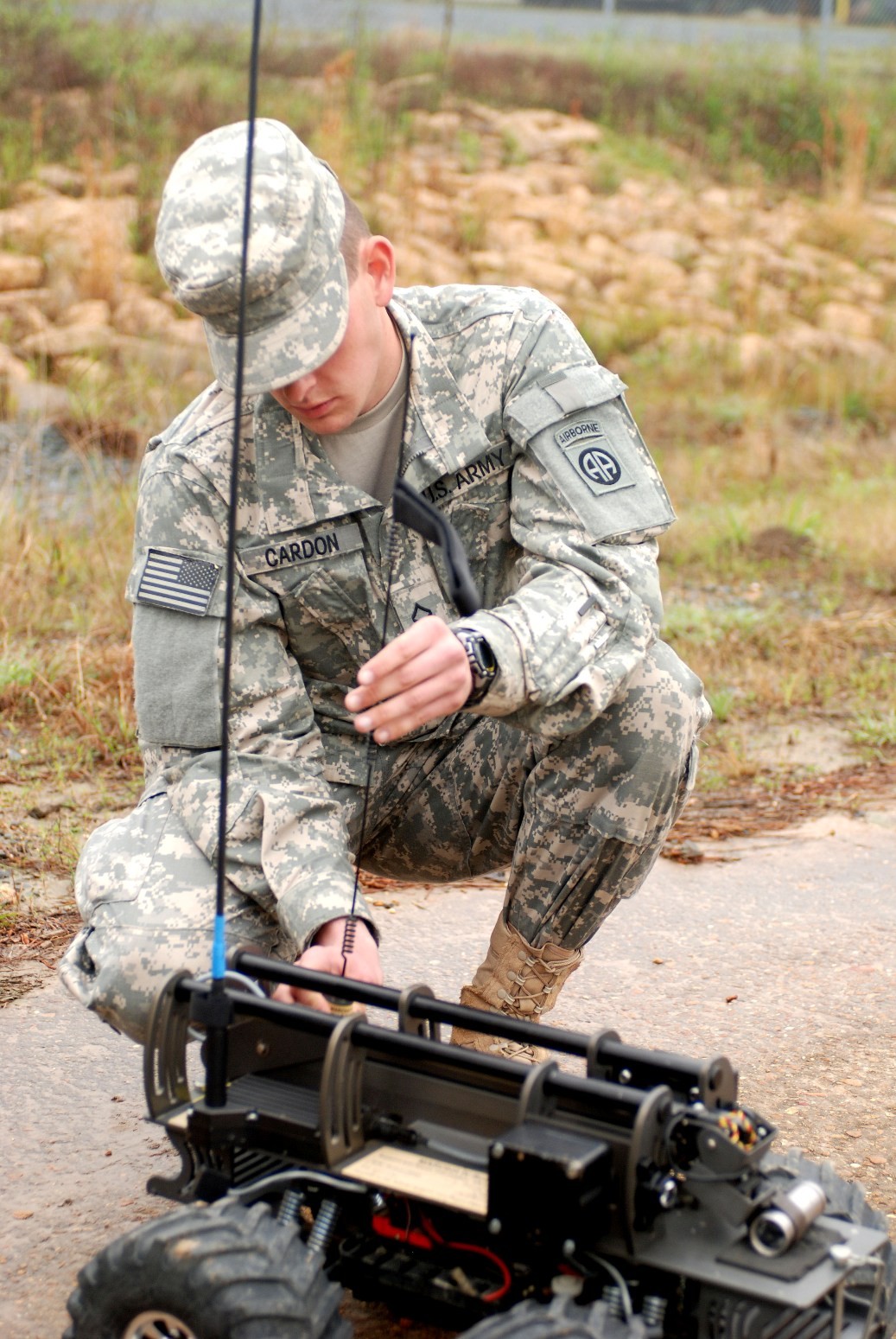FORT POLK, La. (Army News Service, March 31, 2009) -- Sgt. Patrick Stockwell, an Army Reserve Soldier from Leander, Texas, and non-commissioned officer in charge of robotics at the Improvised Explosive Device Defeat Center at Folk Polk, La., takes his job seriously for a very personal reason.
In August 2007 Stockwell's son-in-law was killed when he entered a building and triggered an IED hidden inside.
"If he had one of these robots, maybe he would still be here," Stockwell said.
Stockwell, who trained paratroopers from the 4th Brigade Combat Team, 82nd Airborne Division, March 27 to March 30 during the unit's rotation to the Joint Readiness Training Center at Fort Polk, believes that robots have saved the lives of thousands of Soldiers and Marines.
"In 2007, 1,634 robots were lost in action," Stockwell said. When I ask most leaders how many guys they would send to check out a suspicious object they say two. So multiply 1,600 by two."
The paratroopers trained on several different robot systems, including the Multi-functional, Agile, Remote-Controlled Robot IV, or MARCbot IV, and the Talon. The MARCbot IV is a light-weight reconnaissance robot that can spot IEDs or enemy positions in danger areas, while the Talon is fully equipped to defeat IEDs.
The MARCbot IV is highly portable and easy to use. Paratroopers can transport them in vehicles or drive them in front of dismounted patrols to look around corners, inspect possible vehicle-born IEDs, check buildings for traps and perform just about any other reconnaissance function that Soldiers are creative enough to come up with.
The paratroopers practiced maneuvering the robots and using the robots' arms, and learned how to maintain them. Each robot operator has to practice to be proficient, because they will be expected to train other Soldiers in their unit to use the robots too, said Jimmy Slaton, retired Marine and head technician at the IED Defeat Center.
Operators that grew up with video games have a much easier time figuring out the nuances of the controls, Slaton said. All of the newer model robots even have a controller that resembles a modern video-game controller, he said.
"It's real simple once you get your hands on it," said Pvt. 1st Class Walter Ciucevich, a heavy construction equipment specialist from Wahaiwa, Hawaii, with Company A, 508th Special Troops Battalion, 4th BCT, 82nd Abn. Div.
For Ciucevich, working with robotics was another example of a new and interesting experience he didn't realize he'd be getting when he joined.
"I didn't know I'd be doing anything like this," Ciucevich said. "I never got a chance to see any of these robots before. I'd heard of them from presentations, but a power point slide isn't the same."
Apart from being easy to use, the robots are highly versatile, Slaton said. Some of the robots used by the Army and Marine Corps can support attachments to detect landmines, and pressure plates, or dig to uncover buried explosives.
"Almost anything that can be used on ground can be used on a robot," Slaton said.
Stockwell encountered every type of damage case imaginable while repairing robots in Iraq and has seen how tough they are, he said. One unit came to him with a robot they said had been thrown 25 feet by an IED, and in 20 minutes he replaced the arm and got the robot functioning again, he said.
Robots also allow Soldiers to continue their missions smoothly, because positive identification of IEDs helps Explosives Ordnance Disposal prioritize known IED locations and not spend time checking out false alarms, Stockwell said.
Whether they're disarming bombs or peeping around the next corner, robots save lives by taking the risks so paratroopers don't have to. A MARCbot IV might cost the Army a few thousand dollars, Stockwell said.
"How much is your life worth to your family'" he said.
(Sgt. Stephen Decatur serves with the 4th Brigade Combat Team Public Affairs Office, 82nd Airborne Division.)






Social Sharing